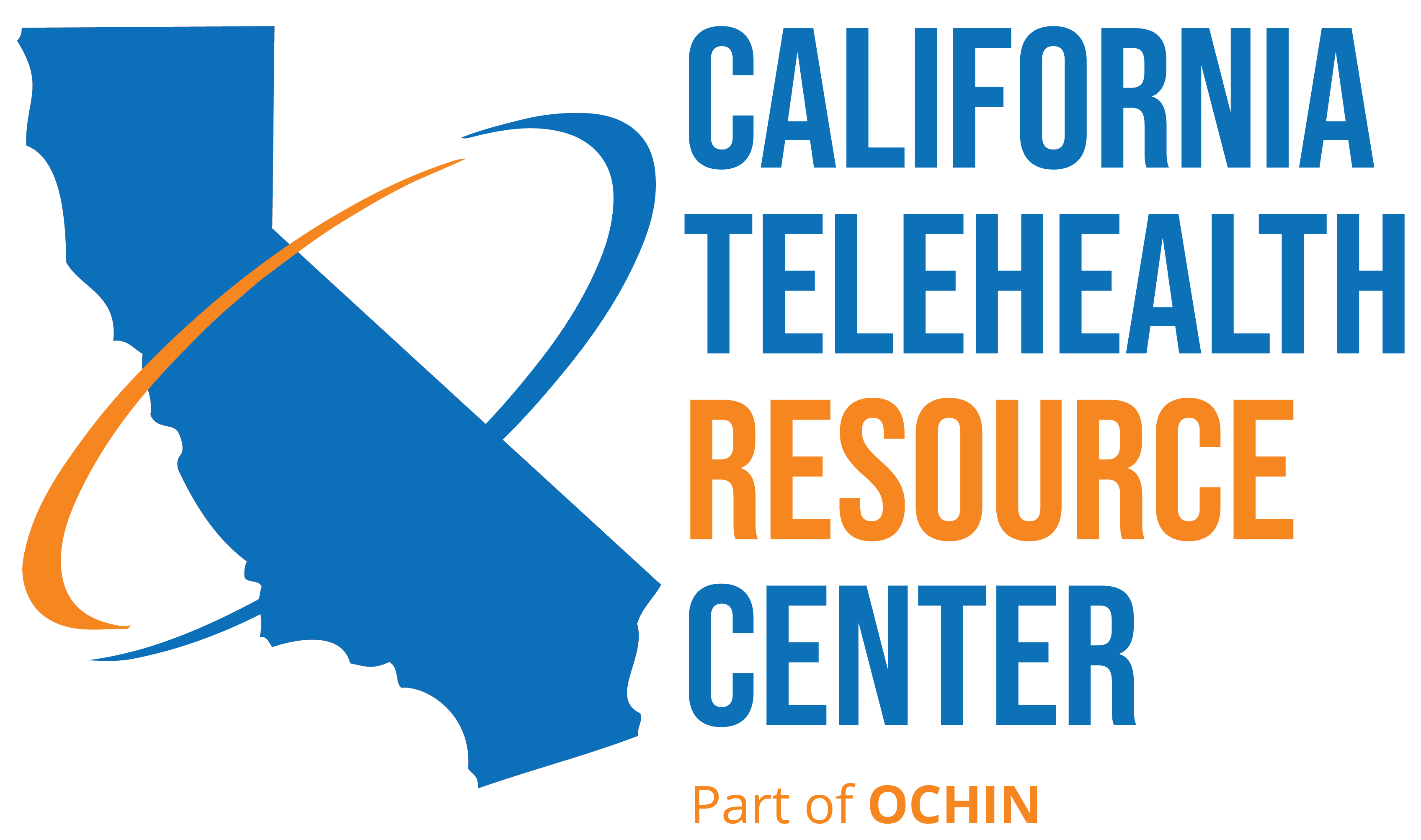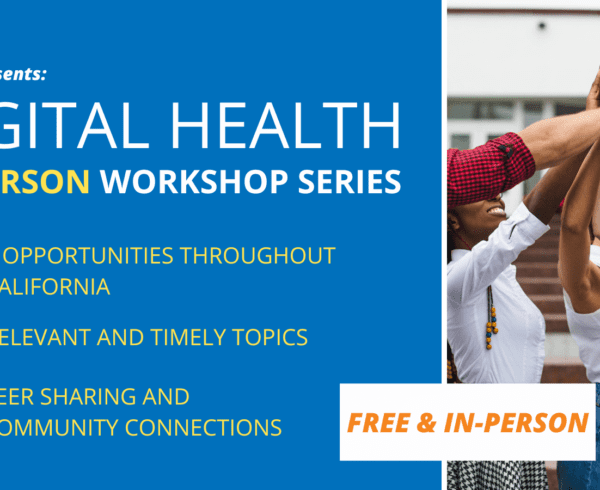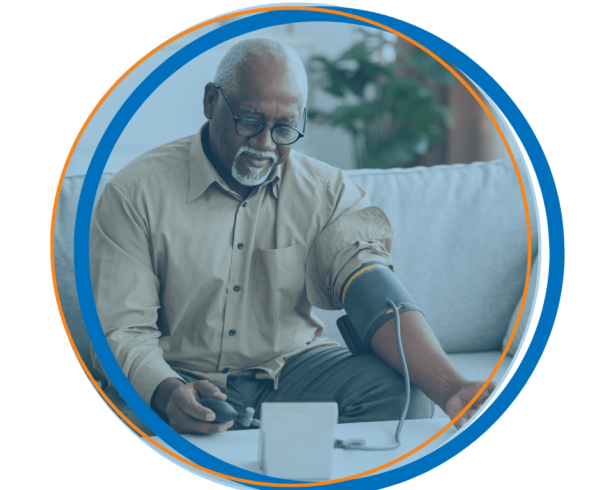“Remote patient monitoring (RPM) technology allows health care providers to use devices that gather and analyze health information without a face-to-face appointment or in-person testing. RPM is not a new practice, but it continues to grow in popularity for the convenience it provides patients and the opportunities it offers to improve patient care.” – Telehealth.HHS.Gov
Health care technology is constantly evolving to improve patient care, health outcomes, and health equity. Of all the emerging technologies, remote patient monitoring (RPM)—sometimes referred to as remote physiological monitoring—may be among the most critical strategic investments for health centers as they prepare for the shift to a value-based health care paradigm. Data is the lifeblood of value-based approaches, and in particular continuous streams of biometric data for connected, whole-person care. As a preamble to the upcoming Advances in Remote Patient Monitoring Learning Event co-hosted by CTRC and the California Health Care Foundation, this blog delves into the world of RPM and its role in the future of health care.
The Rising Prevalence of Chronic Conditions in the United States
Chronic conditions are surging in prevalence throughout the United States. With as many as six in ten Americans living with at least one chronic condition and chronic conditions comprising approximately half of the top ten causes of death in California, they are some of the top leading drivers of health care costs.
According to California Health Care Foundation Senior Program Officer Diana Camacho MPH, “Chronic care conditions risk overwhelming our health care systems if we do not find new strategies to manage them effectively. This is particularly true for our safety net delivery system, which cares for a disproportionate share of Californians with chronic illness while lacking resources and a workforce. Remote patient monitoring (RPM) empowers patients and creates stronger linkages to providers. As a result, I believe it has the potential to be a transformative tool to better manage chronic conditions and improve health care outcomes for those most at risk.”
Without action to remedy this issue, the prevalence of chronic diseases will continue to swamp the state’s health care systems with the greatest negative impacts to California’s most vulnerable populations.
How RPM Can Help
RPM is a technology solution that holds promise to ease hospital strain and by providing more timely interventions for chronic conditions in less costly, lower-acuity settings. It is technology that optimizes opportunities for proactive and preventative care management between office visits rather than episodic, reactive disease treatment.
RPM enables continuous streams of patient-generated health data (PGHD) that can act as a warning signal for imminent health issues. PGHD includes biometric data, patient-reported outcomes (PRO), patient lifestyle information, symptoms, and medical history. Evidence suggests that PGHD from RPM has several potential benefits regarding individually tailoring clinical care. For example, it may help reduce the number of hospital readmissions and clinical visits, supplement clinical data, facilitate timely advice, support more personalized treatment plans, and deliver a more comprehensive look at a patient’s status. These benefits may be critical for a dwindling health care workforce, especially if staffing issues persist into the future.
Experiences with RPM: Perspectives of Participating Health Centers
To gain insight into how RPM might impact health centers in California, the CTRC team reached out to the Northeast Valley Health Corporation, a network of health centers with active RPM programs serving the San Fernando Valley and Santa Clarita Valley regions of the state.
Q: Why did your FQHC decide to implement an RPM program? Is it living up to your expectations? Explain.
A: Prior to the COVID-19 pandemic, all medical visits were completed in-person. We would collect vital signs at those visits. During the pandemic, fewer patients were being seen in person, and more patients were being seen via telehealth—either through audio-only visits or video-audio visits. This shift in how medical visits were conducted led to vital signs not being collected during telehealth visits. We began to see a drop in our blood pressure control rate due to blood pressures not being collected in the reporting year.
As an initial step, we began distributing unconnected blood pressure monitors to patients to enable them to check their own blood pressure during telehealth visits. However, we still noticed that blood pressures were not being collected frequently during telehealth visits for various reasons, such as patients not being at home, patients not being asked to report their blood pressure, or the blood pressure not being documented in the vital signs field of the EHR during telehealth visits.
We decided to implement an RPM program in order to have access to the patient’s blood pressure readings via a third-party RPM portal. Our RPM team could then integrate blood pressure readings from the RPM portal into the vital signs field in the EHR, enabling real-time access to blood pressure values to coordinate timely patient care.
Q: How did you implement RPM within your daily work? Please provide at least one example of successful implementation.
A: We have a team of RPM Health Educators who monitor an RPM platform that tracks our patients with RPM devices. RPM Health Educators watch for out-of-range readings as flags for timely follow-up. They also work with patients with RPM devices who continue to have out-of-range readings, providing individualized education on self-management and connecting patients with poor control to a primary care provider or clinical pharmacist for timely medical decision-making.
RPM Policy, Funding, and Technology: California and Beyond
RPM can help lay the foundation to position health centers well for the health care of the future. However, to truly ensure that RPM is readily available to California residents, supporting legislation is needed to support widespread implementation of RPM across the state.
When asked about California’s current policies and funding regarding RPM, CHCF’s Diana Camacho explains, “California still has more work to do to enable greater access to RPM through policy and payment. However, thanks to the boom in telehealth, we are beginning to demonstrate the power of RPM which will be key to making the case. In the meantime, we need to continue to uncover how to make RPM accessible for more patients, further understand its impact on health outcomes, determine when RPM provides the most value, and figure out how to sustain it into the future.”
Stay Current on RPM Policies
To ensure that you are up to date with current state and CMS rules pertaining to RPM and other forms of telehealth, check their website regularly and subscribe to the California Telehealth Resource Center’s monthly newsletter.>
Current Medi-Cal policy sets RPM reimbursement in California at full-scope coverage for established patients ages 21 and up as well as those with pregnancy-only coverage when ordered and billed by physicians or other qualified health professionals (QHP).
There are 5 remote physiologic monitoring codes that Medi-Cal reimburses for which are consistent with Medicare Communication Technology-Based Services (CTBS). To receive RPM services, patients must give verbal consent either prior to or at the time of service; written consent is not required. For more information on Medi-Cal rates of reimbursement, check out the DHCS website. Rates are updated monthly and posted to the site.
Federally Qualified Health Centers, Rural Health Centers, and RPM
Current CMS rules state that RPM services are already included in the RHC All-Inclusive Rate (AIR) or FQHC Prospective Payment System (PPS) payment, and thus, they are not separately billable.
There are certain condition requirements for allowable RPM reimbursement as part of chronic care management (CCM), transitional care management (TCM), or principal care management (PCM) services for Medicare patients treated at FQHCs.
Although RPM reimbursement is not guaranteed for all FQHCs, it is essential that FQHCs gather and report the RPM services they provide. In turn, this helps to support the case to make RPM reimbursement for FQHCs separate from the PPS payment.
It is advisable to confirm federal and state policies before offering or billing for RPM services.
Remote Patient Monitoring Event: Learn, Engage, Advance
The California Telehealth Resource Center in partnership with the California Health Care Foundation (CHCF) is pleased to announce Learn, Engage, Advance, a virtual four-hour RPM learning event on February 9, 2023, from noon to 4:00 p.m. PST. Join us for an afternoon of learning with a deep lineup of telehealth experts from across the state. Sessions include advances in policy and payer reimbursement impacting RPM technologies, emerging best practices in data management, and applications for clinical care.
Together, we will explore ways remote patient monitoring technologies can drive more equitable health outcomes for medically underserved communities.
Click here to register.
Click here to view the full event agenda.
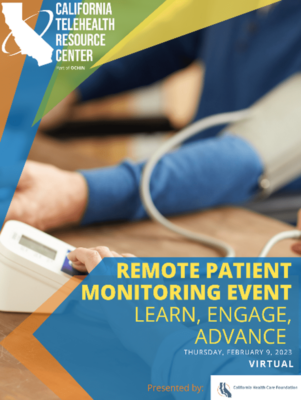 Featured Speakers
Featured Speakers
William England PhD, JD
Senior Advisor, HRSA Office for the Advancement of Telehealth (OAT)
Carol Yarbrough, MBA
Business Operations Manager, Telehealth Resource Center at UCSF
Andy Molnar
CEO, Digital Therapeutics Alliance
Participating California Health Centers
Lifelong Medical Care – Berkeley
Neighborhood Healthcare – San Diego
Contra Costa HSIT – Martinez
Northeast Valley HC – San Fernando Valley
Universal Community Health Center – Los Angeles
Learning Objectives and Topics
Participants will learn and network with peers implementing RPM in ambulatory care settings to improve care management for patients with chronic diseases such as diabetes and hypertension. In Sessions on best practices will include opportunities to discuss challenges and surface solutions to implement sustainable RPM programs.
- Emerging lessons from RPM pilots and research studies on diabetes and hypertension management
- Network of peers actively exploring approaches to optimize RPM
- Insights on how to sustain RPM services leveraging new Medicaid policies, partnerships with vendors and health plans including non-Medicaid payers.
CTRC: Your Unbiased Resource for RPM Success
CTRC’s team of experts hopes that with this learning event we can support and empower California’s health professionals to implement RPM in their practices. In turn, helping to further health equity within the state and aid those with chronic conditions.
We operate a federally funded regional telehealth resource center that provides technical assistance to existing and developing telehealth networks. Bolstered by CTN’s subsidiary relationship with OCHIN, the CTRC program offers a long list of unbiased, no-cost tools and services based upon proven telehealth practices. Take for example, CTRC’s RPM Toolkit available free to download. We have specialized expertise in working with rural/frontier providers, safety-net clinics, and facilities serving medically underserved patients who might not otherwise be able to access care. Our patient beneficiaries include those with low incomes, racial/ethnic minorities, agricultural workers, homeless individuals, and those without adequate access to the internet.
CTRC has a long history of establishing successful telehealth programs and supporting broadband connectivity in California and has worked in a variety of settings, including community health centers and critical access hospitals, to create community-based models of care that increase access to primary and specialty health care.
